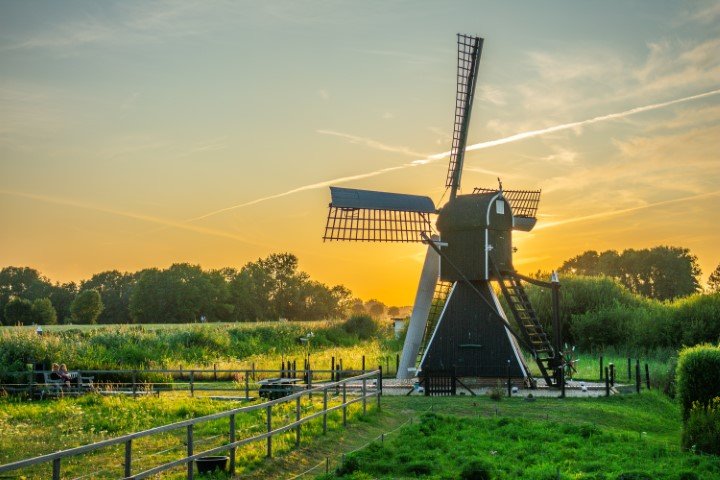New Agriculture Technology in Modern Agriculture

Innovation is more important than ever in Modern Agriculture. The industry faces huge challenges, from rising costs of supplies, to labor shortages. And changes in consumer preferences for sustainability and transparency.
There is increasing recognition by agricultural companies. The need for solutions to these challenges. In the past 10 years, agricultural technology has experienced explosive
There is significant growth in investment. It has invested $ 6.7 billion in the past five years and $ 1.9 billion in the last year alone.
Major technological innovations in space have focused on Indoor vertical farming. Robotics, livestock technology, and automation.
And modern greenhouse practices, and precision farming. And artificial intelligence.
Farm Automation One solution to many challenges

Why are hundreds of business owners investing in robotic farming? Who must address the current challenges facing the agriculture sector immediately?
If you work in this field, these problems are not new to you:
Consumer preferences:
The overload of fast food and other unhealthy meals in. The market has increased the demand for healthy food products.
The impact that unhealthy food has on our bodies has led to a “back to basics” approach: Consumers. Worldwide crave healthy, vegan food.
The farmers have to supply it in large quantities to meet the demand of the new consumer.
Lack of labor:
You will hardly find nowadays a teenager who dreams of being a farmer. The truth is, the world’s people strive to live a more urban lifestyle.
So agribusiness has to deal with the labor shortage. Moreover, Modern Agriculture practices have changed. Over the past decade, making it difficult to train new workers.
Environmental responsibility:
The general public and local authorities expect Modern Agriculture companies to be friendly. And show a responsible approach to their work.
Farmers should choose to reduce the use of chemical ingredients, particularly pesticides.
Business owners in the agricultural sector are looking for a solution. To this social and environmental demand. And they can find it in farm automation.
Finally, automated tractors
Who can control these types of tractors? It is only necessary to help during the initial setup. And regular maintenance of the machines.
With time, smart tractors will become more autonomous with vision systems. Light detection tools, Global Positioning System (GPS), etc.
Livestock Farming Technology

Most of us are familiar with the term “farm-to-table”. On a sunny Saturday morning, we set out for breakfast and lunch in the trendy cafes and restaurants.
But as we swallow mimosa. We often forget the pledge to bring our favorite dishes from farms in the kitchens.
Today farmers face challenges from infrastructure to connectivity. The growing demand for animal protein to food spoilage. And disease concerns about animal health mount.
Technology is disrupting all industries in our modern era, and AgTech is no exception.
We sought on a mission to return to our roots. And gather the perspectives of those who drive the industry and work to address these issues.
The traditional livestock industry is a sector that is overlooked. And underdeveloped, although it is the most vital.
Finally, livestock provides the much-needed renewable natural resources that we depend on every day.
Indoor Vertical Farming

Indoor vertical farming can increase crop yields, and overcome limited land area. And even reduce the impact of farming on the environment by reducing. The distance traveled in the supply chain.
Indoor vertical farming is also called the practice of growing products. That is stacked on top of one another in a controlled, closed environment.
Using mounted growing shelves reduces the amount. Of land needed to grow plants compared to traditional planting methods.
This type of farming is often associated with the city. And urban farming due to its ability to thrive in a limited space.
Vertical planters are unique in that some settings do not need soil to grow the plants.
Finally, most of them are hydroponic. Where the vegetables are grown in a nutrient-dense watery pot, or aeroponic. The roots of the plant are sprayed with water and nutrients. Instead of natural sunlight, artificial growth lamps are used.
Modern Greenhouses

A greenhouse (also called a greenhouse, or, if heating is enough, a greenhouse) is a structure with walls. And a roof made of transparent material.
Like glass, where plants have grown that need regulated climactic conditions.
These structures range in size from small barns to industrial-sized buildings. The mini greenhouse is known as a cold frame.
The interior of a greenhouse exposed to the sun gets warmer than the outside temperature. Which protects its contents in cold weather.
Finally, many greenhouses or commercial greenhouses are high-tech production facilities. For vegetables, flowers, or fruits.
Precision Agriculture

Promising Modern Agriculture technologies are moving into the future at breakneck speed.
They provide great help to farmers in their endeavors to improve inputs. Simplify farm management. And increase productivity.
Increased revenues, as well as lower maintenance costs, help boost profit margins.
In the context of. Smart solutions, precision agriculture offers a Swiss military knife of farming techniques today. And tomorrow’s farmers.
Artificial Intelligence

The advent of digital agriculture. and associated technologies has opened up a wealth of new data opportunities. Can remote sensors, satellites, and drones.
Information gathering 24 hours a day in an entire field. It can check soil condition, temperature, plant health, etc.
The amount of data that these sensors can produce is enormous. The significance of numbers is a hidden task in the breakdown of that data.
The idea is to allow farmers to better understand the situation on. The ground through advanced technology. That can tell them more about their condition than they can see with the naked eye.
And not only more but also more than seeing her walking or driving in the fields.





